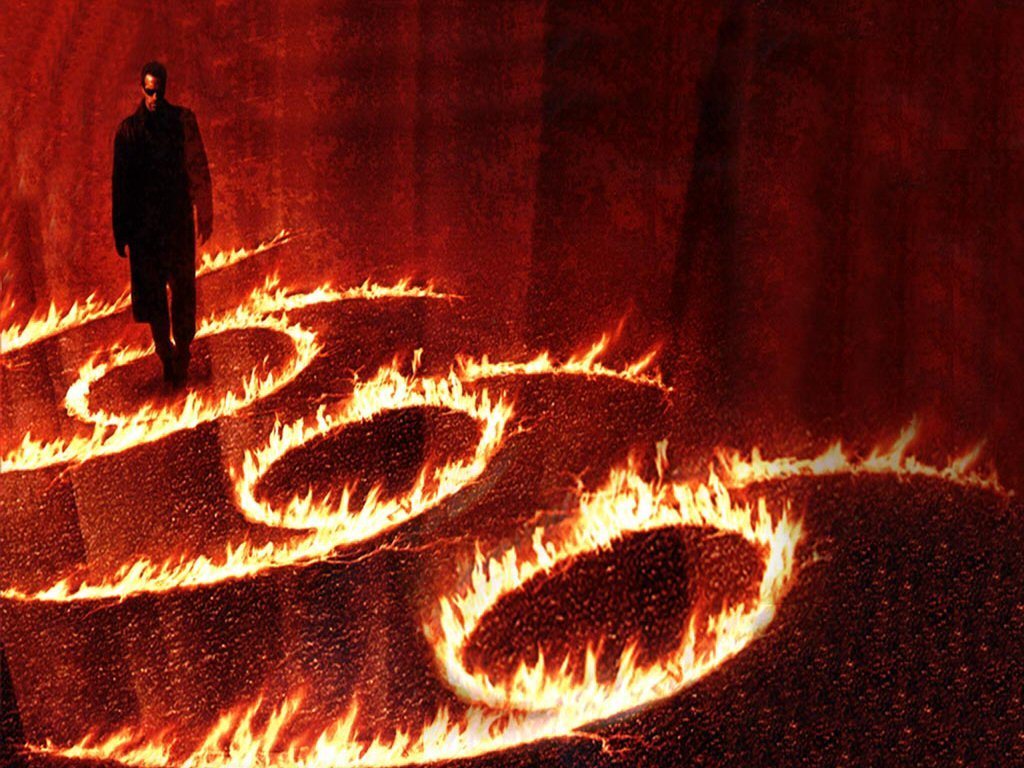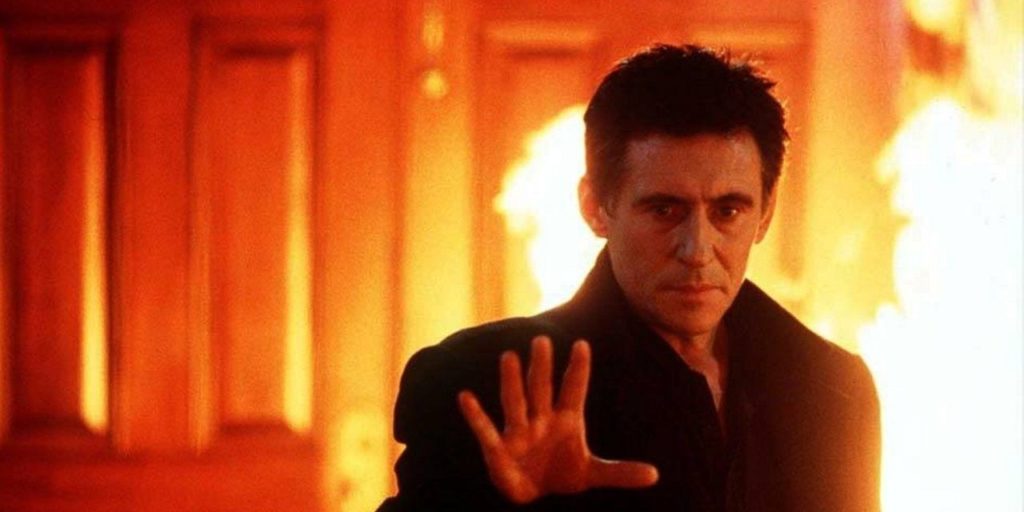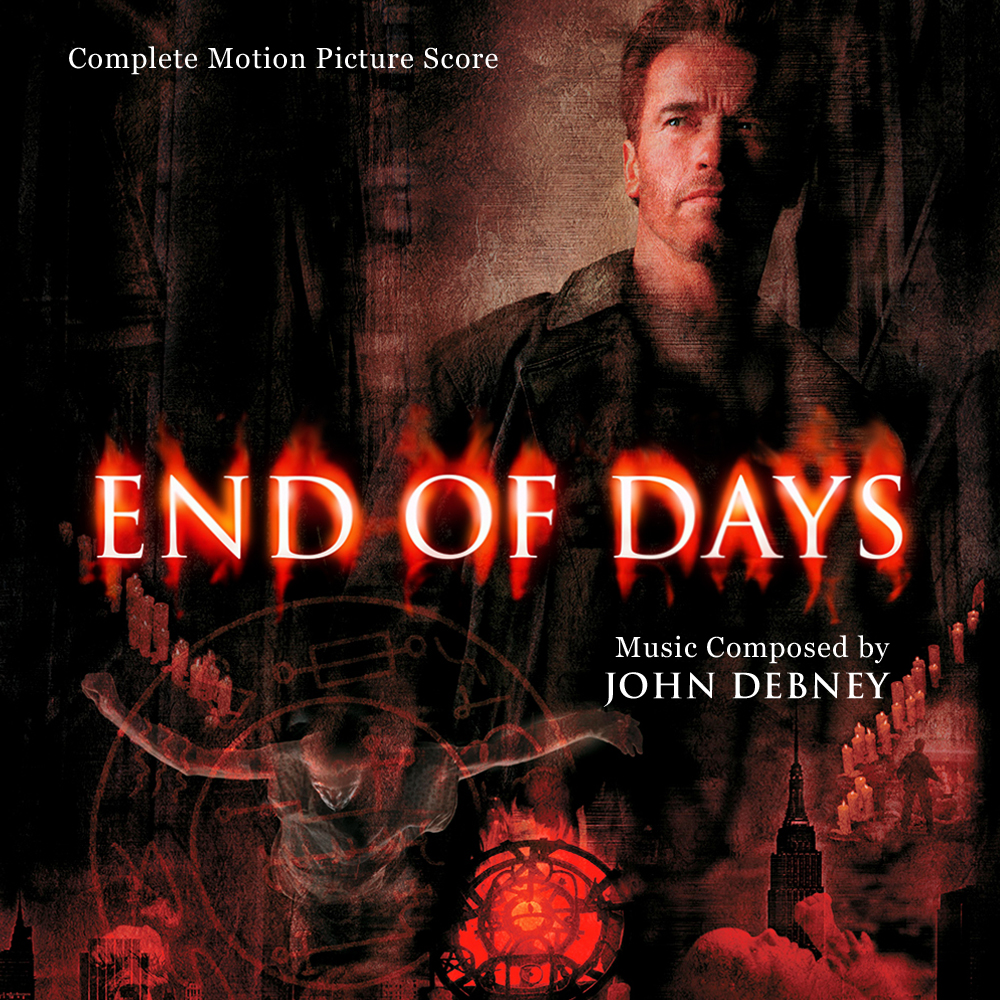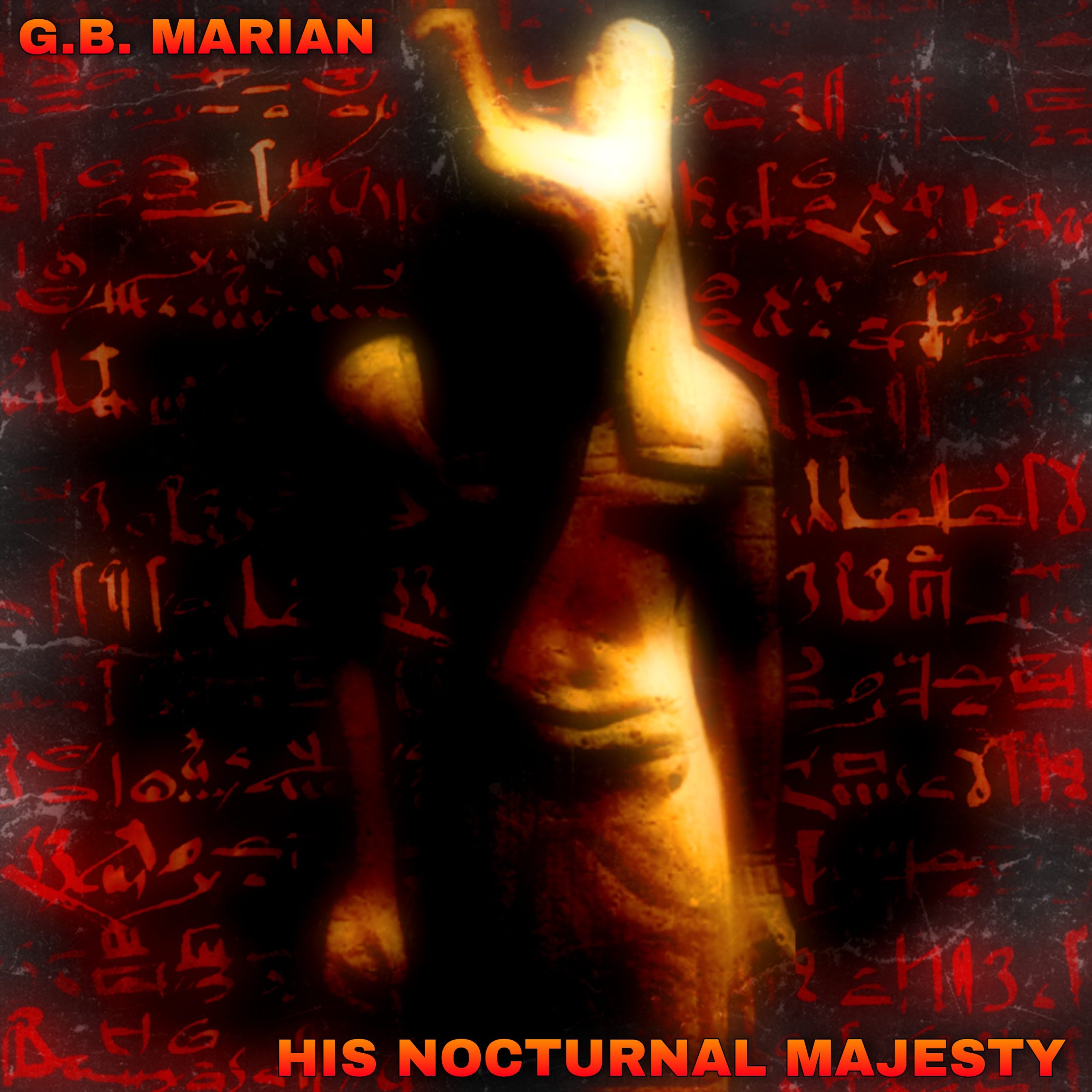Previously I discussed the television series Millennium, a brilliant show that made a huge impression on me as a Setian teenager back in the 1990s. There was another apocalyptic-themed horror romp from that era which made a huge impression on me too, but it was not nearly so remarkable. In fact, it’s really a terrible production most any way you look at it. But in those crazy days just before January 1, 2000, when lots of people were kinda worried the world might actually fall apart on New Year’s Eve, there was one theatrical film that dared to exploit all that juicy endtime paranoia. And shitty as it was, I’d be remiss if I didn’t address some of the influence it has had on me.

That’s right, I’m talking about the one and only End of Days (1999), that magnificent shit show in which Arnold Schwarzenegger squares off against Satan himself, who’s prowling the streets of New York City in Gabriel Byrne’s body. Oh Gods, where do I even START with this fucker?
Okay, so the story begins with a bunch of clergymen at the Vatican freaking out about a comet and some prophecy about a “satanic” child being born somewhere. Then, in New York City, Udo Kier kills a snake and baptizes a newborn baby girl with its blood. The girl just happens to be born with a birthmark that resembles some kind of glyph. Then, confusingly, we fast forward to December 1999, when a semi-invisible creature rises up from the sewers of NYC to possess some random business dude (Gabriel Byrne) so it can grab some poor lady by her bosom, then blow up a restaurant. Then we meet Jericho (Arnold Schwarzenegger), some kind of private security guy whose family was murdered and who is just one stone’s throw away from killing himself. Jericho is hired to protect the dude who’s possessed by Satan, which comes in handy when a crazy Catholic priest with no tongue tries to assassinate the guy.
Jericho does his job, but he doesn’t like the way things add up. So he decides to investigate the priest, which somehow leads him to track down Christine (Robin Tunney), the woman who was born and baptized at the beginning of the movie by Satanists. This is convenient too, because it turns out Satan is searching for her. Apparently, Christine was bred to be his bride at the End of Days. If the devil succeeds in raping Christine at the stroke of midnight on New Year’s Eve, it will somehow allow him to take over the world and burn the whole thing down to a crisp. This is all explained to us by another Catholic priest (played by Rod Steiger) who leads an underground movement to find Christine and keep her safe. But at the same time, a rival sect within the Church has sent an army of assassins to kill Christine before Satan can get to her. Any way you slice it, Arnold—er, I mean Jericho—feels compelled to get Christine the hell away from everyone. The whole thing leads to a midnight black mass in the sewers, a subway chase scene, and then a final confrontation in some random church. Satan possesses Jericho at the last minute before midnight, and all seems lost; but Jericho resists the devil’s will to rape Christine and commits suicide instead, thereby saving the poor lady and canceling the apocalypse.
(Are you keeping up with all of this? Fascinating how much plot they managed to cram into this movie, especially considering how shallow and empty the film actually is!)

End of Days clearly wasn’t made by dogmatic Christians; otherwise the writers would have adapted the book of Revelation much more faithfully (pun intended). It is the pinnacle of absurdity when Rod Steiger rants about how Jericho should “read the Bible” to understand what’s going on, given the absence of any real biblical content in this story. The fact that Steiger comes across as angry and scolding while he does this is definitely a turn-off, too. The film presents itself as trying to “scare audiences back into church,” but it doesn’t care enough to get any of its own bullshit right! Instead of actually adapting the book of Revelation or anything like that, this is basically just a Terminator movie that swaps the supernatural for science fiction.
Consider this film’s version of the devil, for instance. Other cinematic adversaries of the time were quite a bit more interesting, such as Al Pacino’s take on Lucifer in The Devil’s Advocate (1997) and Denzel Washington’s face-off against Azazel in Fallen (1998). Gabriel Byrne’s devil, however, is little more than a two-dimensional slasher movie villain who stalks and slashes people. This is quite a shame too, because Byrne is a magnificent actor and could have really owned this role if he had been allowed to do so. As it is, he just stands there, says a few cliches, and gets shot at. I suspect the director, Peter Hyams, is the real reason why Byrne’s performance in End of Days seems so forgettable. Maybe it’s just because I’m a Setian and I actually know the complex history of where “the devil” came from; but I personally prefer my satanic horror movies to be a little more innovative, thought-provoking, and weird. (Just wait for my NEXT sermon, in which I will give a most excellent example of what I mean!)

I also have two very serious objections to the plot. First, I don’t appreciate the fact that this entire story hinges on the threat of Christine being raped. And yes, I’m aware that she says, “I’m scared I might WANT to sleep with him” at some point; but I don’t care. Being hypnotized into having sex with someone STILL COUNTS AS RAPE. (In fact, there are other lady characters in the film who are raped in this manner.) And since there is no mention of the devil actually raping anybody in the book of Revelation, a decision was clearly made to capitalize on Satanic Panic hysteria here. I not only find this distasteful; I find it disgusting. They could have just as easily written it so that Satan has to eat a ham sandwich on New Year’s Eve to start the apocalypse (which would have been much more entertaining, actually!)
My second objection relates to the main character, Jericho. Let’s be honest here: Arnold Schwarzenegger isn’t exactly the greatest actor who ever lived. But his acting ability isn’t a problem for me; I enjoy him in many of his films just for his charisma. No, the problem here is that Jericho is written as a suicidal person who eventually HAS to take his own life (and at the Christian God’s behest, in fact). He has no character arc to speak of; he never grows or learns anything, he just stays exactly the same all the way through. So when Jericho has to kill himself at the end, it’s not like he says, “But wait, I’m not suicidal anymore!” or anything like that. No, far be it from End of Days to offer us any sort of character development. It’s more like Jericho has been waiting to kill himself this whole time, and now he can finally get it over with. The message I take from this is incredibly ugly, toxic, and mean-spirited. It feels like End of Days is saying, “Suicidal feelings are GOOD because they make men MANLY, and they make us better suited to serve God’s will!” And that is not a message I can ever agree with.

By now, you must be wondering how on earth End of Days could have influenced my spirituality or my art so much, given that I am so hyper-critical of this film. Well, the answer lies partly in my criticisms, which I will explain further in just a moment; but it also partly lies in the soundtrack. And no, I am not referring to the compilation album with the Rob Zombie and Guns N’ Roses songs. I’m talking about the instrumental movie score by John Debney, which features a lovely fusion of choral, orchestral, and electronic music. As soon as I heard this stuff while watching the film at the theater, I knew I had to purchase it on CD. I fucking hated End of Days as a movie, but the Debney score continues to be one of my all-time favorite records, even today. I listened to it every day for a while in high school, and it inspired me to try and come up with my own crazy apocalypse movie. I tried writing this as a script or a novel for years, but I could never quite hammer out the details in a way that satisfied me. All I knew was that I wanted it to be a Setian take on Armageddon, rather than a Christian (or quasi-Christian) one. And now, twenty full years later, I have finally actualized this dark dream in a form that others can enjoy: the album, His Nocturnal Majesty (2020).

But while I despised End of Days upon my initial viewing, something about the movie kept making me want to re-watch it over the years. I still think it is an egregiously stupid movie, and I would never recommend it to anyone. But at least now I can appreciate the film for a few reasons. I do rather enjoy the action sequences; Byrne’s devil is boring, but it is fun to watch Schwarzenegger launch grenades at the bastard. (I really enjoy the subway sequence in particular, for some reason.) I also enjoy the fact that whenever I watch End of Days, it takes me back to December 1999. I remember being skeptical of the Y2K bug and all that stuff; but there was still a tiny little part of my brain that wondered, “What if the world really does end tonight?” on New Year’s Eve that year. End of Days is not really a “religious” movie at all, for it has nothing of any real spiritual value to offer. It is instead an A-list, big budget exploitation movie. The real point was to exploit all that apocalyptic fear everyone was feeling, and to show us as much gore and sleaze in the process as possible. While I would much prefer the story to have been written without any rape or romanticization of suicide, I do have to admire the filmmakers for being so damn eager to deconstruct Christian apocalypticism in this manner.
One thing I absolutely adore about End of Days, however, is Arnold Schwarzenegger’s attitude toward Satan throughout the entire movie. I mean, he actually tells the devil “YOU’RE A FUCKING CHOIR BOY COMPARED TO ME!” at one point. And cheesy as it might sound, I love it! I think it perfectly exemplifies what Set probably thinks and feels whenever He locks eyes with Apep!

